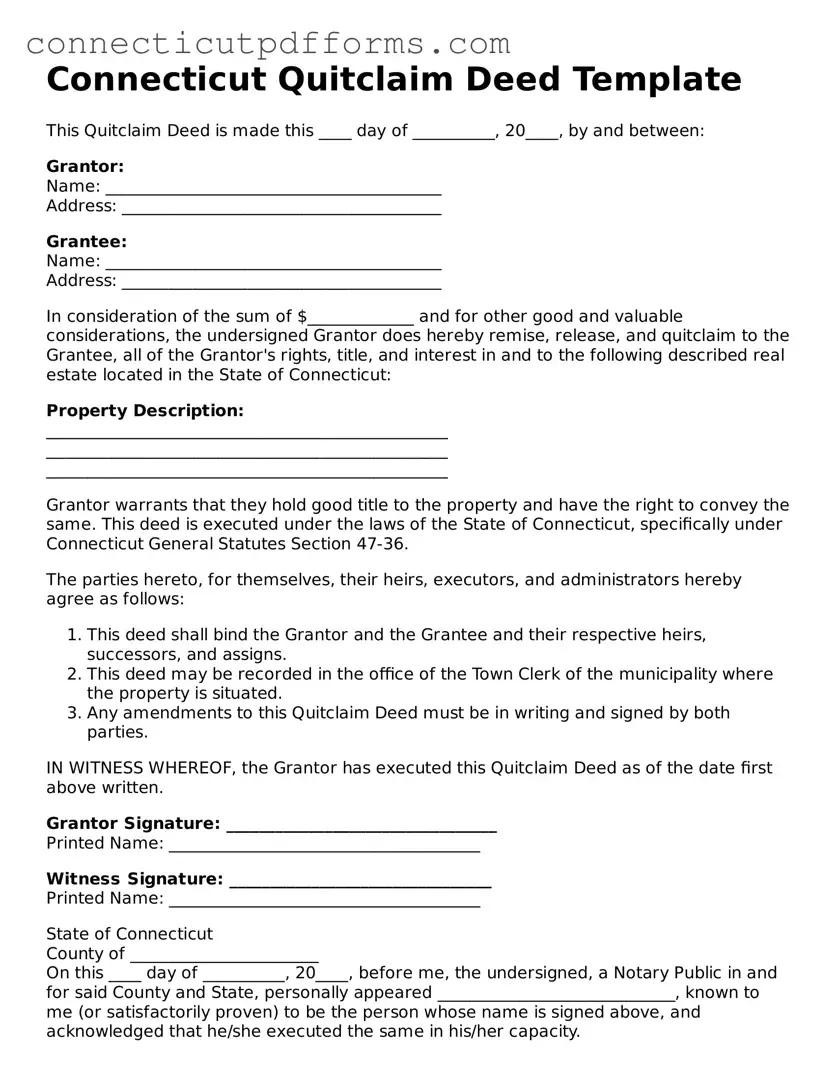Connecticut Quitclaim Deed Template
This Quitclaim Deed is made this ____ day of __________, 20____, by and between:
Grantor:
Name: _________________________________________
Address: _______________________________________
Grantee:
Name: _________________________________________
Address: _______________________________________
In consideration of the sum of $_____________ and for other good and valuable considerations, the undersigned Grantor does hereby remise, release, and quitclaim to the Grantee, all of the Grantor's rights, title, and interest in and to the following described real estate located in the State of Connecticut:
Property Description:
_________________________________________________
_________________________________________________
_________________________________________________
Grantor warrants that they hold good title to the property and have the right to convey the same. This deed is executed under the laws of the State of Connecticut, specifically under Connecticut General Statutes Section 47-36.
The parties hereto, for themselves, their heirs, executors, and administrators hereby agree as follows:
- This deed shall bind the Grantor and the Grantee and their respective heirs, successors, and assigns.
- This deed may be recorded in the office of the Town Clerk of the municipality where the property is situated.
- Any amendments to this Quitclaim Deed must be in writing and signed by both parties.
IN WITNESS WHEREOF, the Grantor has executed this Quitclaim Deed as of the date first above written.
Grantor Signature: _________________________________
Printed Name: ______________________________________
Witness Signature: ________________________________
Printed Name: ______________________________________
State of Connecticut
County of _______________________
On this ____ day of __________, 20____, before me, the undersigned, a Notary Public in and for said County and State, personally appeared _____________________________, known to me (or satisfactorily proven) to be the person whose name is signed above, and acknowledged that he/she executed the same in his/her capacity.
Notary Public Signature: ______________________
My commission expires: __________________________
